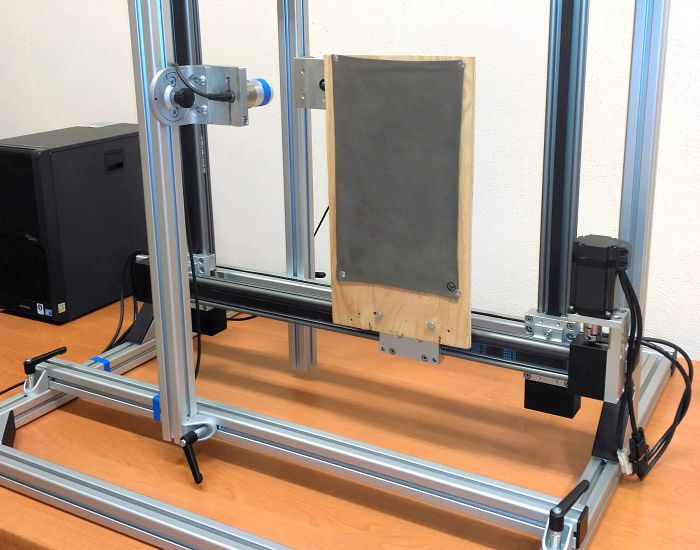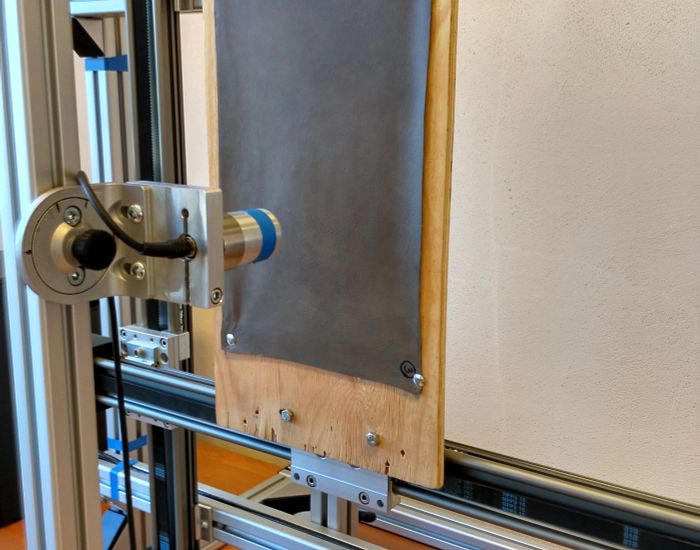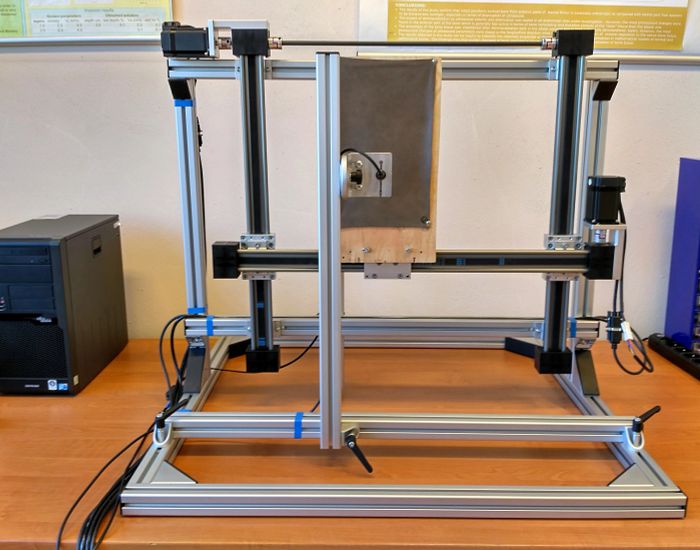Award ID: 734 Company: Uniwersytet Kazimierza Wielkiego, Instytut Mechaniki i Informatyki Stosowanej Polska
Allgemeine Informationen
- Datum: 2020-05-26 10:28:52
- Firma: Uniwersytet Kazimierza Wielkiego, Instytut Mechaniki i Informatyki Stosowanej Polska
- Ansprechpartner: Mr. Radosław Drelich
- E-Mail: radeko@ukw.edp.pl
- Anschrift: Kopernika 1, Bydgoszcz
- Telefon/Fax: +48523257651/650 /
- Land: Polska
Beschreibung:
Manus 2019
US_P001 airborne ultrasonic scanner.
US_P001 ultrasonic scanner is designed for non-destructive testing of materials in the air (non-contact) using ultrasonic waves passing, reflected, plate or surface, to identify defects, material inconsistencies, and other structural or mechanical properties.
US_P001 airborne ultrasonic scanner.
US_P001 ultrasonic scanner is designed for non-destructive testing of materials in the air (non-contact) using ultrasonic waves passing, reflected, plate or surface, to identify defects, material inconsistencies, and other structural or mechanical properties.
Problem:
The ultrasonic scanner US_P001 (Fig.1) is a computer-controlled, automated measurement system designed to increase the measurement capabilities of the modern IMIS Ultrasonic Research Laboratory at Kazimierz Wielki University in Bydgoszcz. The system is designed to test samples of materials with small thicknesses and dimensions in the scanning plane up to 300mm x 300mm. The sample moves in the vertical scanning plane, Fig.2. Transmission and reception of ultrasonic waves is carried out in the air by means of special ultrasonic transducers adapted for this purpose in the frequency range from 20kHz to 2MHz. The wave generated by the transmitter arrives as an oblong wave in air to material, is propagated in it as one of the modes specific to solids (longitudinal, transverse, surface or plate wave, depending on the position of the transducer relative to the material), and then radiates from the material through the air to the receiving transducer.
The geometry of the scanning path and measurement step are defined in the dedicated software for the system. As a result of the scanning process, a sequence of scans A is recorded and a scan B is created, similarly to ultrasonography used in medicine, which shows the amplitude of signals as a function of the sample position. Further processing of the signals allows to obtain information about the properties of the tested materials, in particular the imaging of defects and discrepancies in the material (Fig. 3).
The geometry of the scanning path and measurement step are defined in the dedicated software for the system. As a result of the scanning process, a sequence of scans A is recorded and a scan B is created, similarly to ultrasonography used in medicine, which shows the amplitude of signals as a function of the sample position. Further processing of the signals allows to obtain information about the properties of the tested materials, in particular the imaging of defects and discrepancies in the material (Fig. 3).
Lösungidee:
The constructed US_P001 scanner (Fig. 1) uses a two-axis flat portal with a 500mm x 500mm Igus trolley to position the sample in the plane (2D scanner). The flat portal that determines the scanning plane is oriented vertically, allowing the testing of flaccid materials (thin plates, fabrics, skins, films, etc.). (Fig.2.)) which, due to the sagging, could not be precisely tested in a horizontal arrangement. The sample positioning system is driven by modern Easy Servo hybrid motors and is controlled by a program that synchronizes the sample movement with the operation of the system for transmitting and recording signals. The system is a modern, automated measuring device. The use of driblin® grease-free linear guides in the scanner positioning system eliminates the need to lubricate the cooperating elements, thus reducing sensitivity to dust or dirt, ensuring quiet operation of the system and limiting the scope of necessary service.



